Feature Articles
I. Food Safety Day 2007
Eric SUEN, our Food Safety Ambassador, pays attention to the hygienic condition of a restaurant whenever he eats out. In his view, food premises in Hong Kong do achieve a high hygiene standard.
|
|
The favourite foods of our second Food Safety Ambassador, Candy LO, are sashimi and sushi. Since these are higher risk foods, she will be very cautious in ensuring food safety. This summer, the Centre for Food Safety (CFS) and Radio One of the Radio Television Hong Kong (RTHK) jointly organised the "Food Safety Day 2007". A number of celebrities and pop singers were invited to share views on food safety. Both artists Eric Suen and Candy LO were Food Safety Ambassadors of this event. |
| The "Food Safety Day 2007", entitled "Collective Responsibility in Ensuring Food Safety", was held on 18 August at Lung Cheung Mall in Wong Tai Sin, with RTHK DJs SIU Kwok-wah, CHOI Ho-leung and CHEUNG Yuen-kwan as the masters of ceremonies. Invited to the event were Dr York CHOW, Secretary for Food and Health, Mr Eddy CHAN, Director of Food and Environmental Hygiene, Dr Constance CHAN, Acting Controller of CFS, Mr Phillip CHOW, Acting Assistant Director of Broadcasting (Radio), Hon Fred LI, Deputy Chairman of the Legislative Council Panel on Food Safety and Environmental Hygiene as well as representatives of the food trade and members of the public. CFS has organised the Food Safety Day for the second time. Speaking at the opening of the event, Dr CHOW said that since its establishment in 2006, the CFS had spared no efforts in communicating with the food trade and the public to listen to their views. He urged the food trade to comply with the laws and regulations and source foods that were safe for consumption, while members of the public should observe good food hygiene and purchase foods from reliable retailers. |   |
The "Food Safety Day 2007" kicked off with guests of honour officiated at the opening ceremony. Food Safety Ambassadors, Eric SUEN and Candy LO, together with other singers and bands, joined the audience in the games "Food Safety Responsibility", "Critical Control Point CCP" and "Check the Labels" to disseminate food safety messages. The game booths and exhibition attracted active participation from the public who could learn more about the roles played by the Government, the trade and the public in promoting food safety.
II. Collective Responsibility in Ensuring Food Safety

To ensure food safety, an active tripartite collaboration among the Government, food trade and public is essential. "You" have a significant role to play.
Your Role
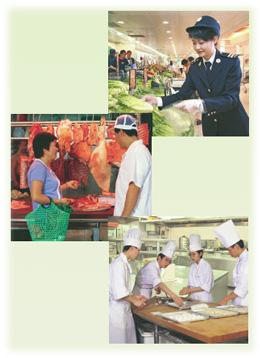
- Purchase safe and healthy food
- Purchase food from licensed and hygienic food stalls
- read food labels and check the expiry dates
- pay attention to news issued by the CFS
- During food preparation, storage and consumption,
- pay attention to personal and food hygiene
- store food properly
- cook thoroughly
- Should you have any doubt about the food purchased
- enquire and clarify with the seller before purchase
- report any abnormalities to the Food and Environmental Hygiene Department (FEHD) if necessary to facilitate investigation and follow-up actions
The Government will make strenuous efforts to develop and implement effective food safety measures and to maintain close liaison with food authorities abroad. Whereas the food trade should comply with good manufacturing practice and requirements of food legislation, and source food and ingredients from reliable sources.
Readers' Corner
I. Preservatives in Food
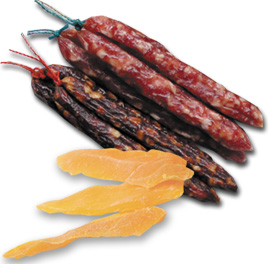
Food may deteriorate if not properly stored. Besides spoiling many desirable properties (e.g. taste, colour and nutrition) of food, micro-organisms may grow and produce toxic substances which cause harmful health effects.
Preserving techniques have been in use since ancient times to extend the shelf life of food. A number of food preserving methods have been invented, including air-drying,smoking,salting/pickling and the use of preservatives. However, improper use of preservatives will render the food unfit for human consumption.
The use of preservatives has already been included under the routine food surveillance programme of the CFS. Recently, the CFS conducted a targeted food surveillance project to assess the use of preservatives (including sulphur dioxide, benzoic acid and sorbic acid) in preserved fruits and vegetables, and the results were published on 27 September. Among the more than 460 samples tested, 40 (or about 9% of the total number of samples) were found to be unsatisfactory. Most of the unsatisfactory samples contained an excessive level of preservatives (including sulphur dioxide, benzoic acid and sorbic acid), while only a very small number of them involved the use of unpermitted preservatives in the food concerned. Sulphur dioxide, benzoic acid and sorbic acid are commonly used preservatives of low toxicity. They should not pose significant health risks to consumers upon normal consumption.
The CFS has taken follow-up actions, including tracing the source of the food in question, asking the vendors concerned to stop selling and to dispose of those food items, taking follow-up samples and issuing warning letters. If there is sufficient evidence, prosecution action will also be taken. The CFS has also urged the food trade to comply with legal requirements when using preservatives.
Advice to Consumer
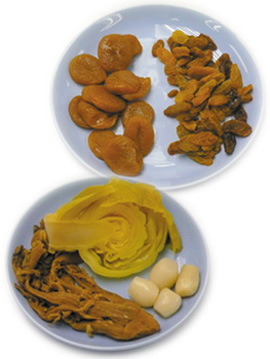
- Buy food from reliable suppliers.
- Maintain a balanced diet so as to avoid excessive exposure to preservatives from a small range of food items.
- People with history of allergy should read food labels of pre-packaged foods to avoid intake of preservatives causing allergy (e.g. asthmatic patients who are allergic to sulphur dioxide should avoid intake of sulphur dioxide).

II. Regulation of Red 2G
Red 2G (also known as CI Food Red 10, International Numbering System No. 128) is a synthetic colour that is resistant to light, heat, acid and sulphur dioxide. According to the Colouring Matter in Food Regulations, Subsidiary Legislation H of the Public Health and Municipal Services Ordinance (Cap. 132), Red 2G is a permitted colouring matter to be used on food.
Recently, the European Food Safety Authority re-evaluated the safety of Red 2G and concluded that Red 2G is of food safety concern. The European Commission has therefore, on 26 July 2007, legislated to suspend the use of Red 2G on food.
Given the latest results of scientific studies and recommendations of the Expert Committee on Food Safety, CFS will amend the Colouring Matter in Food Regulations by removing Red 2G from the list of permitted colouring matter.
III. Pesticide Residues in Food
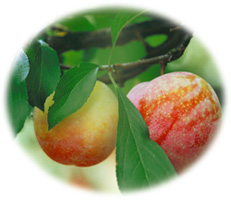
What are pesticides? Pesticides are substances used to kill or control unwanted insects, plants, fungi, rodents or other pests. Insecticides, herbicides, rodenticides and fungicides are some commonly used pesticides.
Why are pesticides used? Pesticides kill or control pests and hence reduce food loss resulted from infestation, increase food supply and cut back food production cost. Comparing with other pest control methods, the application of pesticides is more efficient and cost-effective.
Why do pesticides appear in food? The presence of pesticide residues in food may be resulted from:
- direct use of pesticides on crops;
- animal feeding on pesticide treated feed; or
- environmental contamination.
Why is regulation of pesticide residues in food required? Excessive exposure to some pesticides may cause adverse health effects. Regarding the regulation of pesticide residues in food in Hong Kong upon the application of pesticides, the Public Health and Municipal Services Ordinance (Cap. 132) stipulates that all food on sale must be wholesome, unadulterated and fit for human consumption. However, there is no specific subsidiary legislation to govern pesticide residues in food in Hong Kong.
Proposed Regulatory Framework
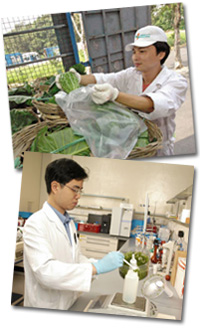
To better protect public health, facilitate effective regulatory control and promote harmonisation between local and international standards, the Government has proposed to introduce a new subsidiary legislation to govern pesticide residues in food.
The proposed regulatory framework mainly includes demarcating the scope of regulatory control of "pesticides"; specifying clearly the allowed concentration of a pesticide residue in food; adopting the standards established by the Codex Alimentarius Commission as the backbone to develop the standards for Hong Kong and the criteria with regard to contravention.
Views Sought
Public consultation has begun on 13 November 2007. The consultation document can be downloaded from CFS website (http://www.cfs.gov.hk) or obtained from the following locations:
- CFS Communication Resource Unit
8/F, Fa Yuen Street Municipal Services Building,
123A Fa Yuen Street, Mongkok, Kowloon - FEHD District Environmental Hygiene Offices
- District Offices of the Home Affairs Department
Views of the public and the trade on the proposed regulatory framework are very important. Please send your comments by letter, facsimile or e-mail to CFS before 31 January 2008:
Centre for Food Safety
(Attn.: Risk Assessment Section)
Food and Environmental Hygiene Department
43/F, Queensway Government Offices,
66 Queensway, Hong Kong
Facsimile: (852) 2893 3547
E-mail address: pesticide_consultation@fehd.gov.hk
Enquiry telephone no.: (852) 2867 5699
Any person submitting views and comments should be aware that the Government may publish all or part of the views and comments received and disclose the identity of the source in such manner as the Government considers appropriate, unless he/she requests any part of the views and comments and/or his/her identity be treated in confidence.
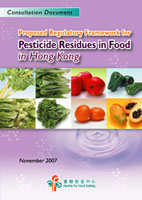 |
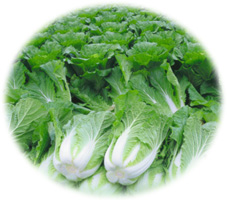 |
Food Safety Plan Corner
Hazard Analysis and Critical Control Point (HACCP) — Roast Chicken
Critical Control Point of Preparing Roast Chicken
Christmas is approaching! Many parents like to hold Christmas parties at home for children to exchange presents and enjoy a delicious feast. Roast chicken is one of the most popular items on the Christmas menu.
Roast chicken recipes are usually simple. However, as the entire chicken is put into the oven for roasting, the critical control point is to make sure that each and every part of the meat is thoroughly cooked. Let's take a look at the production of "honey-roasted spring chicken":
Honey-roasted Spring Chicken
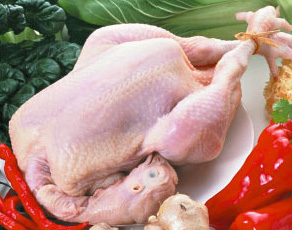
| Ingredients | |
|---|---|
| Spring Chicken ................... | 2 [approximately 675 g/1.5 lbs] |
| Barbecue Pork Sauce......... | 3 tbs. |
| Seafood Sauce ................... | 2 tbs. |
| Sesame Oil ......................... | 1 tbs. |
| Herbs ............................... | 1 tsp. |
| Honey .............................. | 2 tbs. |
Production Process
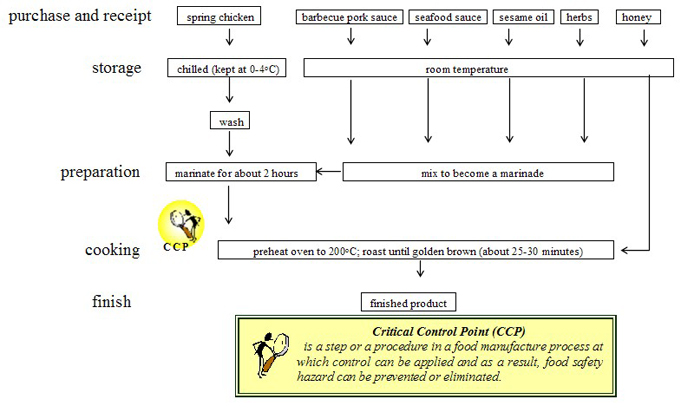
Guidelines on Roast Chicken Production
- Purchase and receipt
- Purchase ingredients from licensed and hygienic retailers.
- Check that the ingredients are not contaminated or damaged and have not passed the "expiry" or "best before" date.
- Storage
- Store the ingredients immediately at proper temperature.
- Keep raw poultry meat in covered containers and store in the lower compartment of the refrigerator. Keep ready-to-eat and cooked food in the upper compartment to avoid cross-contamination.
- Practise first-in-first out stock rotation method.
- Preparation/Cooking
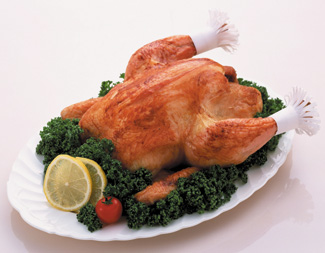
- Wash thoroughly all table surfaces, utensils and equipment that have been used for preparing poultry meat.
- Poultry meat has to be marinated for a longer time (approximately 2 hours) and should therefore be refrigerated when left to marinade.
- Preheat the oven to a suitable temperature before roasting.
- Cook poultry meat thoroughly before consumption. Check the core or thickest part of poultry meat to ensure that the meat or the juices running from it are not red or pinkish. Cook the poultry again if necessary until fully done.

- If there are pinkish juices running from the cooked poultry or if the middle parts of the bones are still red, cook the poultry again until fully done.
Food News
Understanding Cholesterol
Many people associate "cholesterol" with something disadvantageous to health. In fact, cholesterol is mainly used for cell membranes synthesis and production of bile and certain hormones. An appropriate amount of cholesterol is required to maintain good health. Excessive cholesterol in blood may, however, accumulate on the inner walls of our blood vessels and increase the risk of heart disease and stroke. The following questions and answers may tell you more about cholesterol.
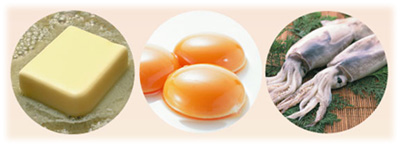
Q1: Does all cholesterol in our blood come from our diet?
A1: No. Only a small amount of our blood cholesterol comes directly from food. Most of it is produced by our liver and some other parts of our body. High cholesterol foods include egg yolks, viscera, squids, cuttlefish, lards and animal fats. Excessive consumption of high fat foods (particularly those containing saturated fats and trans fats) and high cholesterol foods will raise the total cholesterol level in blood.

Q2: Are there "good" cholesterol and "bad" cholesterol?
A2: Yes. Low-density lipoprotein cholesterol in our body is known as "bad" cholesterol. The higher the concentration of "bad" cholesterol in blood, the greater the risk of heart disease and stroke. On the contrary, high-density lipoprotein cholesterol is "good" cholesterol that helps to prevent heart disease. Saturated fats, trans fats and cholesterol in our diet raise the level of "bad" cholesterol in our blood; whereas a high fibre diet (particularly water-soluble fibre) helps to reduce "bad" cholesterol and regular exercise helps to increase "good" cholesterol in our blood.

Q3: Is it true that only fat people have the problem of high cholesterol level?
A3: No. High cholesterol level is not exclusive to overweight or fat people. It can be attributed to heredity or other factors. A balanced diet, healthy lifestyle and regular exercise are what everyone needs to stay mentally and physically healthy.
Activities
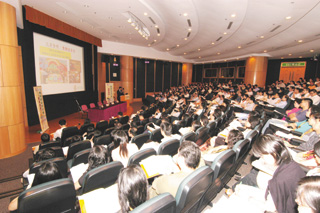 Food Hygiene Seqminars
Food Hygiene Seqminars
Under the Food Hygiene Campaign, CFS conducted a series of 22 sessions of food hygiene seminars from June to September 2007. Under the theme "Let's work together for better food safety", these seminars aimed at publicising proper food handling measures to employees of food business, staff of elderly centres and child care centres, teachers and members of the public. They also promoted the adoption of the "HACCP" System and the implementation of a "Food Safety Plan" in food processing to enhance food safety. Emphasis was also placed on the importance of active participation and tripartite collaboration among the Government, the food trade and the public.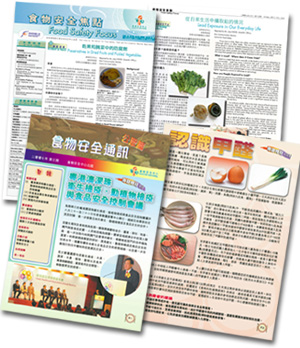 Consumer Liaison Group
Consumer Liaison Group
The Consumer Liaison Group has held ten focus group meetings since its establishment a year ago. Activities of the Group enable CFS to understand better consumers' knowledge, beliefs and risk perception on food safety; and provide a face-to-face platform for communication with the public on various food safety issues. The Group last met on 31 August 2007 to exchange views on the dissemination of food safety messages by the quarterly "Food Safety Bulletin (for Consumers)" and the monthly e-publication "Food Safety Focus". Measures to improve the distribution, topics and presentation of the two publications were suggested.CFS wishes you a happy and healthy year to come.

